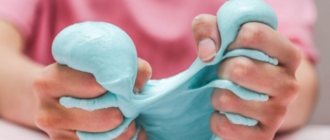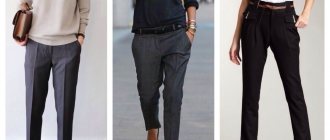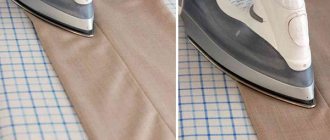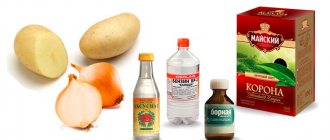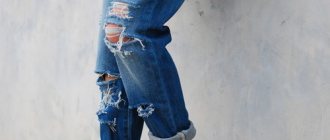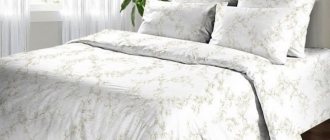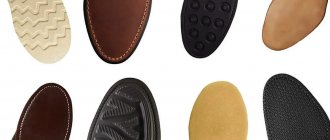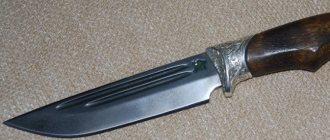What to glue to the carpet?
There are several devices that can hold the carpet in place. They vary in price and method of use.
- The primary solution to the problem is special linings. They can be purchased at a hardware store or carpet store. Available in rolls and cut to required sizes. This is the most convenient device, but also the most expensive.
- To fix the carpet, small rubberized corner-shaped backings are widely used. They are attached to all four edges of the rug and prevent it from moving. This option is ideal for small rugs in a children's room, as well as for the bathroom.
Which is better, laser or optical mouse?
For a long time, it was believed that optical mice were ideal for office use, while laser mice were better suited for gamers and designers. However, over time, optical ones have practically caught up with their “competitors” in all characteristics: they also have high resolution, high accuracy and response speed.
Interesting materials:
What nature reserves are located in the tundra zone? What protective structures are being built in the zone of possible weak destruction? What lands did the incorporation lose as a result of the Union of Lublin? What genres are included in drama? What genres were considered dominant in classicism? Which animals were the first to be domesticated? What magazines should a nail salon have? What winter perfume? Which snake lives the longest? Which zodiac signs will never betray?
Types of carpet underlays
Carpet pads vary in size and the material they are made from. You need to choose them depending on the size of the carpet, its thickness and the type of flooring.
- For small-sized carpets, a thin mesh lining is preferable.
- For large rugs, a natural lining, such as felt or wool, is suitable.
- Combined underlays, combining felt and rubber, can fix carpets with a small thickness and short pile.
- For thick carpets, equally thick linings are suitable, but no more than 0.6 cm thick.
Lining material
Depending on the material, pads can be suitable for different carpets, types of flooring, and also exhibit different properties.
- Polyurethane. Linings made from it are used in residential areas and give carpets additional softness. Suitable for almost any type of floor.
- Rubber. Used primarily in commercial settings, ideal for preventing carpet from slipping on tiles.
- Wool. A natural material that can restore its shape after deformation.
- Adhesive backing. Suitable for fixing carpets on laminate and linoleum. Protects the floor from scratches and damage.
To secure the backing to the product, you must use double-sided tape.
Sealant
Sealant or hot glue will eliminate the problem of the rug sliding on the floor. It is necessary to apply several strips of sealant/glue on the back side of the carpet along the entire length (it is advisable to make the distance between them no more than 10 centimeters).
Wait 5-6 hours until the sealant is completely dry. During this period, the mat should be in a well-ventilated area and isolated from children and pets.
Turn the carpet over and check the result. The dried sealant should prevent the floor covering from slipping.
5 ways to restore the beauty of carpet pile
Alternative options
There is not always the opportunity or funds to purchase specialized devices. In this case, improvised means or cheaper analogues sold in construction stores will come to the rescue.
Carpet tape
Floor tape, which is intended not only for laying floor coverings, but also for fixing carpets.
There are the following types of carpet tape:
- two-sided;
- strong hold tape;
- fabric;
- polypropylene.
It does a good job of holding the carpet in place, but is not durable. The more often the mats are removed for cleaning, the weaker they will remain. It is necessary to periodically replace pieces of old tape with new ones.
Silicone sealant
Instead of using double tape or non-slip pad, simply apply 100% silicone sealant to the back of the carpet and spread it out with a putty knife. Cured sealant, left to dry overnight, will prevent slipping.
Hot glue
By analogy with the previous point, you can use thermoplastic glue. Use a glue gun to apply it to the underside of the rug and wait for the glue to dry. It is advisable to leave it overnight until completely dry.
How to level the Palace after washing?
The simplest and most effective way is to twist the product with the wrong side up and leave it for several days at room temperature. When leveling synthetic surfaces, you can use ordinary water. The folds should be moistened with warm water from the wrong side, and then the product should be folded.
Interesting materials:
What made Dud famous? How to wipe the windshield to prevent it from freezing? How is physical activity regulated? How to glue chipboard together? How to glue fiberboard together? How to glue glassware together? How to lubricate door seals to prevent them from freezing? How to relieve cough spasms in adults? How to extinguish fuel? How to remove yellowness from plastic?
The rug is slipping: what to do
The answer suggests itself that to solve this problem, you need to put something on the wrong side, sew or glue it.
For example, to prevent rugs from slipping in the bathroom, you can simply place rubber rugs underneath them, designed for the same bathroom. It's both cheap and convenient. The rubber will not slip on the tiles; it can be washed at any time, and the knitted rug can be washed.
Our inventors sew small pieces of various rubber that can be found at home on the underside of the rug along the edge and in the center: soles from slippers, rubber tubes, etc.
In addition to rubber, silicone has an excellent anti-slip effect.
And as an option, use silicone sealant for the bathroom, which is used to coat the rug around the perimeter. The mat will not slide on the linoleum, and the sealant will not crumble even after washing.
These are options from the series, so to speak, “cheap and cheerful” or, in modern terms, lifehacks.
But in our civilized world, you can now purchase special devices designed to prevent rugs from slipping, and you also want things to look neat and beautiful from the inside out.
4 devices to prevent the mat from slipping
Mat backing
In carpet stores you can purchase carpet underlay, which is a thin mesh made of polyvinyl chloride. It is sold in ready-made pieces of different sizes from 60x120 to 160x180 cm and comes in two colors: gray and beige.
The price ranges from 100 to 300 rubles.
Such a mesh can be sewn to the rug from the inside out or simply placed under it, which is much more convenient in terms of washing.
Bathroom rug: options and features of choice
Choosing a carpet for a bathroom is not easy, because it is necessary to take into account rather complex room conditions: high humidity, temperature changes, frequent use, increased hygiene requirements.
potterybarn.com
You need to understand that a bathroom rug is not just a decorative element. Rugs are essential to make a bathroom a comfortable space, especially if the floors are not heated. Walking barefoot on cold and wet tiles after a shower is not only unpleasant, but also unsafe, because you can easily slip. A bath mat should cope with all these tasks.
potterybarn.com
To begin with, it is worth deciding on the general criteria and principles according to which you should choose rugs for wet rooms. • The mat should be dense, non-slip, absorb moisture well, easy to wash and dry quickly. The faster the rug dries and the more often it can be cleaned or washed, the less likely mold will grow and the more hygienic the bathroom becomes.• The rug should match the color palette and style of the bathroom interior, and fit harmoniously into the room - that is, color, pattern and The material of the rug should fit well with the existing interior elements. • It is better to choose rugs of a bright or dark shade: light rugs will get dirty quickly and require more care.
• The edges of the rugs must be well processed - this will allow the rug to look neat and tidy for a long time and not lose its shape.
Open sources
Rubber
The most budget option is a rubber or silicone bath mat. This is a budget and practical solution. These rugs are easy to wash and dry, they do not slip and look decent for a long time. The material may contain antibacterial additives. You can choose a smooth mat or a mat with a textured, massage surface that will provide additional protection against slipping.
A similar mat can be used on the floor near the bathroom, or in the bathroom itself to ensure its safe use (this is especially true for children and the elderly). But such rugs also have their disadvantages: for example, their surface is quite hard compared to fabric models. This is not to say that such rugs look very aesthetically pleasing - they are rather a utilitarian and functional item, which in some cases can ruin the appearance of the bathroom.
For example, if the bathroom is decorated in a classic style, using expensive materials, then a rubber mat will look ridiculous. In addition, such a rug can become a source of unpleasant rubber odor in the bathroom for some time.
potterybarn.com
Rugs made of textile material look more expensive and are more pleasant to the touch, although they also have disadvantages - when wet they become not very comfortable. The materials for pile rugs are often cotton and acrylic.
Open sources
Acrylic
Acrylic rugs are pleasant to the touch, soft and warm. Such textiles often have additional impregnation that fights fungi and bacteria - which is very important for humid and warm bathroom conditions. The lower part of the mat can be supplemented with rubberized areas that prevent the product from sliding on the floor. This item can be washed in a washing machine; it dries quickly. A large palette of available shades and patterns, as well as the ability to choose a comfortable pile length, make these rugs an excellent choice for the bathroom.
Open sources
Cotton
Cotton rugs are warm, pleasant to the touch, and absorb moisture well. Terry products and products with dense long pile are especially popular. Cotton is an environmentally friendly material that can be easily washed in a washing machine.
Open sources
Microfiber
Microfiber rugs are also pleasant to the touch, this material dries quickly, is easy to clean, and is very durable. Often supplemented with an anti-slip backing. Such rugs cannot be used on “warm floors”, nor can they be dried in the sun or on radiators - the material is not temperature resistant. Such rugs lose their properties over time, which is why they need to be updated regularly.
Open sources
Pebbles
Rugs can also be made of hard materials. For example, from pebbles. The pebbles are attached to a rubber base, which prevents the mat from slipping. The pleasant texture of the surface massages the feet. The stones themselves are resistant to fungus and require no maintenance. These rugs look stylish and at the same time quite discreet. At the same time, such rugs are quite cold and do not absorb moisture.
Open sources
Tree
Wooden rugs are quite common. They are heavy, so they don't slip on the floor. Wood is an environmentally friendly material that absorbs moisture well and has a pleasant, warm surface. However, you need to check for the presence of impregnation that prevents the material from rotting, and after use, give the mat a chance to dry. Check the surface for smoothness to avoid splinters. Wooden “rugs” are great for eco- and boho-style interiors, with an emphasis on the use of natural materials. These rugs are very durable.
Source: https://archidea.com.ua/home/bathroom/963679-kovrik-v-vannuyu-varianty-i-osobennosti-vybora
How to fix a carpet on the floor
How to fix the carpet on the floor so that it does not slip? It turns out there are several ways to solve the problem:
- Glue the rug or runner to the floor using double-sided tape;
- Use special self-adhesive leaves or plates to repeatedly fix the surfaces together. More often they are used to install small shelves;
- Apply a small layer of material to the bottom surface that will have a high coefficient of friction with the floor;
- Use anti-slip substrates. this will help securely fix the coating in one place;
- Place anti-slip mats for bathtubs or sanitary facilities;
- Place heavy furniture on the edge of the carpet. this will reliably prevent the floor covering from moving from its place.
What to do to prevent the carpet from slipping: choosing holders for the carpet
Carpets are reliable and faithful friends for every home. Overall, they create a cozy atmosphere, making your stay in the house pleasant and comfortable. However, when purchasing any carpet, you should evaluate the difficulties that you will encounter during its operation. One of the problems is the carpet slipping both on stairs and on other surfaces of the house. This is what we will talk about today.
Carpet holders on stairs
If your home has a staircase between floors, then a carpet will help decorate it and make it more functional. But since the traffic on the stairs is quite large, even without any fixation the carpet will slide over the surface and constantly slide down. For safety reasons, a carpet holder is almost always installed on stair carpets along with the carpeting.
- The material from which the product is made. It can be steel, brass, aluminum and bronze. The most popular options are brass and stainless steel. These materials are the most wear-resistant; they are not exposed to the external environment, with the exception of aggressive environments.
- Type of construction. The holder itself can be made in the form of a tube or in the form of a rod. A heavier, and therefore more reliable option is a rod, which is why it is most often used during installation.
- Design. In general, the holder has two decorative elements that can transform the space of the staircase: the rod itself and its tip.
Carpet Holder Design
If your house has a staircase and you decide to put a carpet on it, then most likely you set out to give the interior a Rococo, Baroque, Art Deco, Art Nouveau or Romanticism style. In general, the holders should match both the interior of the entire room, as well as the material of the stairs and the design of the carpet.
Also, when choosing a carpet holder, it is important to focus on the country of origin. Italian and Polish options are the best, but cheap analogues can also be found in China.
Carpet clips
If the carpet on the floor in one of the rooms of the house slips for some reason or the corners of the carpet are bent, then there is an urgent need to secure the carpet. Sliding can occur for several reasons: you laid down a new floor covering, be it laminate or linoleum, or bought a new carpet. Usually the problem occurs when both the floor and the carpet are new, but once they sit on them, the slip coefficient decreases significantly.
How to secure a carpet or rug to the floor?
There are several fairly effective ways to fix carpet on the floor surface.
- Secure the carpet with double-sided tape - it is better to use small pieces of tape 3-5 cm in length, since a long piece of tape glued to the floor surface can leave traces of glue on it.
- Putting an anti-slip bath mat under the carpet is a different idea if the traffic in the space is quite low.
- At a hardware store or IKEA you can purchase a special mesh that is placed under the carpet to create an anti-slip effect.
- If you can put furniture on the carpet, use it.
- You can also apply silicone to the back of the carpet, which will create additional friction.
If a rug, runner, or other carpeting in your home is slipping, be sure to take action. This is not just convenience, it is the safety of your family members. On such a carpet it is easy to slip and fall from your own height, and this can lead to serious injuries - from bruises to the limbs to a concussion. In addition, the most vulnerable segments of the population – children and the elderly – are at risk.
To learn how to do the opposite - to get rid of the mat sticking to your feet, read the link.
Using double-sided tape
In practice, double-sided tape is available in different versions. It is customary to distinguish the strength of an adhesive joint by the color of the surface. But for carpets too high strength is not needed. They will have to be removed periodically to clean the floor, and then put back in their place.
To secure the carpet to the floor you will need:
- Flip its corners.
- Cut small pieces of tape.
- Remove one of the protective films.
- Glue the pieces to the surface of the carpet.
- Turn the corners of the carpet and press them to the floor.
- In the middle of the edge, also partially bend the carpet and stick additional pieces of double-sided tape.
Double-sided adhesive surfaces reliably prevent the carpet from slipping on the floor.
Double-sided tape is a convenient means of securing objects together.
Attention! When gluing the corners of the carpet, carefully lower them into place. The fold is difficult to remove later.
Advice! To remove the carpet from the floor, lightly wet the corner at the top. Water entering the gluing area soaks the adhesive layer. The bond of the tape to the bottom surface becomes weaker. After peeling off the carpet, remove the tape from the floor. Soapy water is used here. It slowly penetrates under the glued piece. You can slightly warm up the surface with a household hairdryer with a jet temperature of no more than 100 °C.
Using carpet on the wall - methods of attaching the material
Carpet is a universal material. In addition to the traditional use of this material as a floor covering, it is also used to decorate walls. This solution, how to lay carpet on a wall, is rare. Carpet on the wall is not perceived unambiguously by everyone.
But there are situations when carpet on the wall performs not aesthetic, but practical functions. This material is indispensable in recording studios, where carpet reduces background noise and the sound-reflecting properties of surfaces. Lovers of animals, namely cats, attach carpet to the walls and set up “cat houses” - walls for cat climbing. And for lovers of the traditional method of hanging carpets on walls, finishing with carpet is a more modern way not to change their habits.
Advantages and disadvantages of finishing walls with carpet
The carpet on the wall looks original and unusual. Carpet finishing allows you to solve the following problems:
- Thermal insulation and cozy appearance of the wall. Covering bedroom walls with carpet is an alternative to covering the bedside wall with carpet in the bedroom. For such cases, natural materials are chosen. Tufted carpets with medium pile on a jute or felt backing are the optimal solution. There are many design options for carpets, so you can create a plain surface with a rich texture or choose a material with a pattern or decorative print. Finishing a wall with carpet will look completely different than a regular carpet.
- Noise insulation. Carpeting on the floor and walls will make the background noise in a panel house apartment more comfortable, and for musicians this material is a good alternative to soundproofing mineral panels.
The disadvantages of using carpet lie in both its properties and the difficulties in choosing an installation method:
- The ability of carpets to accumulate dust is the same as that of ordinary carpets. The disadvantage is the need for constant maintenance of the coating.
- The choice of installation method and its skillful implementation largely determine the appearance of the wall with carpet, the durability of the finish and the possibility of dismantling. It is this question that is the most difficult for inexperienced craftsmen who decide to decorate a wall with carpet.
Choosing a mounting method
Attaching carpet to walls is not fundamentally different from installing carpet to the floor, but there are significant nuances that can puzzle an inexperienced craftsman.
- The main problem is that the canvas is in a vertical position. To prevent it from stretching, it must be fixed not only around the perimeter, but also over the entire area.
- The second problem is the difficulty of installation on a vertical surface, when the canvas must be held during the mounting process.
In principle, carpet can be attached in two ways: contact with glue and non-contact with slats.
On gripper slats
This method involves the use of pressure strips and double-sided tape. The slats press the canvas along the perimeter, and a mesh of adhesive tape creates adhesion of the material to the wall over the entire area.
The advantages of this method are that there is no need to prepare the base before installing the carpet, and if it becomes damaged or loses its relevance, it can be quickly dismantled.
- First, the slats are prepared, then the canvas is cut out.
- Holes are drilled in the slats and holes for dowels are marked along them on the wall.
- The slats are wrapped in material and secured with a stapler.
- A grid of double-sided tape is glued to a clean wall.
- With the help of a partner, the upper edge of the carpet is fastened with self-tapping screws through the strip. Then install the remaining slats, slightly stretching the fabric. After this, you need to press the carpet well against the wall over the entire area so that it is fixed with tape.
Important! To ensure that there is no gap between the wall and the canvas, in which unwanted inhabitants may appear, gripper slats are made differently than when installing the covering on the floor. They are wrapped in a strip of carpet material and simply pressed against the fabric using self-tapping screws around the perimeter. Hats are hidden in the pile. Instead of wooden slats, you can use decorative metal thresholds, which are used for floor installation of carpet.
The principle of working on covering walls with textile material on a batten:
Glue mount
Wall decoration with carpet using glue. This is a way to create a high-quality coating with a long service life. Heavy canvases are attached using this method. The advantages of this method are that there is no gap left between the wall and the carpet, and the material will not sag over time.
The disadvantage is that not every type of glue will be convenient to work with when installing the coating on a wall, and suitable compositions for this are expensive.
Since the use of slats is not a technical necessity, the problem of carpet edge processing arises. The best option is overlaying the edges. This entails further difficulties associated with the accuracy of cutting the blade and additional costs for finishing the edge.
This installation method will require careful preparation of the wall surface: removal of wallpaper, crumbling plaster, additional puttying and priming.
Glue selection
Popular acrylic compositions are affordable, but the main difficulty of their use in this case is the need to ensure that the canvas is fixed while the glue sets. This material can be used if the carpet is not glued to the entire wall, but to part of it. Small strips will stick to fresh glue and will not slide off. This material can be used when installing carpet on a wooden base (plywood). In this case, the canvas can be glued to the entire wall and temporarily fixed with a stapler.
Velcro adhesives
These are expensive acrylate-based compounds that are best suited for attaching carpet to the wall. Their main advantage is that the canvas can be torn off the wall and reattached. If over time the carpet on the wall gets tired or deteriorates, it is simply removed, and the adhesive composition is easily washed off from the base with alkaline solutions.
Kiilto Grip adhesive has the following properties:
- Works with all types of coatings. In addition to carpet, it can be used to glue hard (tiles, laminate) and elastic materials.
- Moisture resistance.
- The absence of solvents makes it safe to use.
- Not flammable.
- Durability of maintaining the amorphous state.
Two-component adhesive
Polyurethane two-component adhesive is considered the best option in terms of price, ease of use and quality of gluing carpet to a vertical surface.
The glue consists of a binder and a hardener. They are mixed just before the carpet gluing process begins.
Polyurethane adhesive has high adhesion. After hardening, it remains elastic. Unlike other polyurethane compounds, it does not need atmospheric moisture to polymerize, so the adhesion strength does not depend on the “climatic conditions” in the room during operation. Unlike other compounds, when using polyurethane glue, surface unevenness will not cause the formation of poorly glued areas.
As with all two-component compounds, the hardener is toxic. During operation, harmful fumes are released. Therefore, it is necessary to ensure room ventilation and personal protection. After completing the work, you will have to wait until the caustic compounds completely evaporate, and the attached carpet will no longer smell of chemicals.
In the future, if it becomes necessary to remove the carpet, the linen will go into the trash, and cleaning the wall from glue residue will be problematic.
Important! The speed of setting of the glue is both a plus when working on a vertical surface and a minus. There is no need to additionally fix the fabric, but if the carpet is rolled out incorrectly, it can only be corrected within 20 minutes. After this, it will no longer be possible to move the canvas.
The work is carried out by two people, preferably three of them. This will allow you to coat the wall evenly and control the position of the canvas. Gluing is completed by rolling the fabric with a roller.
Using adhesive sheets or sheets
Adhesive sheets or plates for fixing objects together are widely advertised. These items are based on silicone. The procedure is simple.
- Adhesive sheets are placed on the floor where the corners of the flooring are located.
- Lay out the carpet, pressing the corners against the laid sticky sheets.
- After a few seconds of contact, they adhere to the underlying base of the carpet.
- The palace or track is firmly fixed in place.
You don't need to force yourself to remove the self-adhesive. Just bend the corner to the side. It will come unstuck. The self-adhesive sheet remains to be washed in warm water, and it is ready for use again. Manufacturers claim that these products can be used up to a thousand times.
Anti-slip mats
In stores you can find special backings that prevent slipping. They provide additional insulation to the carpeting, locking it in place. The only drawback is that these underlays can weigh significantly more than the carpet itself, and dust also accumulates in them.
Practice has shown that the substrates provide reliable fixation of paths and rugs.
average rating 0
more than 0 ratings
Share link
Comments
Natalya 12/14/2018 00:32
Great tip with the backing. I bought it at a hardware store for 167 rubles - the carpet now doesn’t “crawl” on the floor! Hooray! Thank you!
Application of additional high friction coatings
One of the available options at home is to apply a transparent silicone sealant to the bottom surface.
- Turn away the corners.
- Apply a small amount of silicone sealant.
- Lightly spread the mixture over the surface so that there are no bulges left.
- Allow the applied layer to dry.
- Flip the corners into place and press down lightly. The adhesive layer does not stick, but sticks securely to the floor.
Now the carpet will not budge. Periodically it is worth stepping on the corners to make contact stronger.
Silicone sealant is the first assistant for the home handyman
Attention! When the sealant dries, it emits a strong vinegar smell. Therefore, when working with it, it is recommended to keep windows or doors open. The smell disappears quickly.
How to clean a synthetic mat at home?
To remove stains from the mat, you can use vinegar, alcohol, including ammonia. When removing grease stains, use an iron - place a clean cloth over the stain and iron it. Do not rub the stains too hard; they may become absorbed even more.
Interesting materials:
Where is the Republic of Belarus located? Where is North America located relative to the equator? Where are the transitional climate zones located? Where are the hydra's tentacles located? Where to place the toilet in the bathroom? Where are tulips found? Where does Maple grow? Where does the palm tree grow? Where do field tulips grow? Where do tulips grow in Kalmykia?
Using anti-slip bath mats
Anti-slip bath mats are sold in rolls. The use cases are different. You can cover the floor under the carpet with these rubber products. They are not felt through the thickness of the pile, and at the same time the sliding effect disappears.
Some tapes are cut from the roll and then hemmed onto the underside of the carpet. A few stitches are enough to keep the tape firmly on the bottom surface of the tracks. This use of rubber bands helps prevent the carpet from slipping on the floor.
Anti-slip bath mat is an effective anti-slip solution on surfaces
Velcro tape
Contact tape (Velcro) can most often be seen on clothing or shoes, but it is also used to secure other elements. So, you can use Velcro to secure curtains or rugs. For these purposes, they choose not a sewn-on contact tape, but a self-adhesive one.
It consists of two parts - sticky and fleecy. Each of them has an adhesive base under a protective layer. One of the parts is glued to the floor, and the other to the carpet. The main thing is to correctly measure the size of the carpet so that the Velcro connects clearly to each other. Velcro attaches well to any surface, firmly connects the material and is suitable for long-term use.
